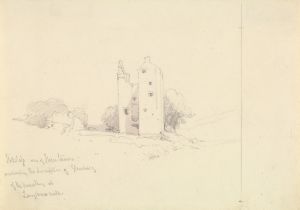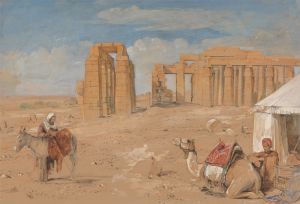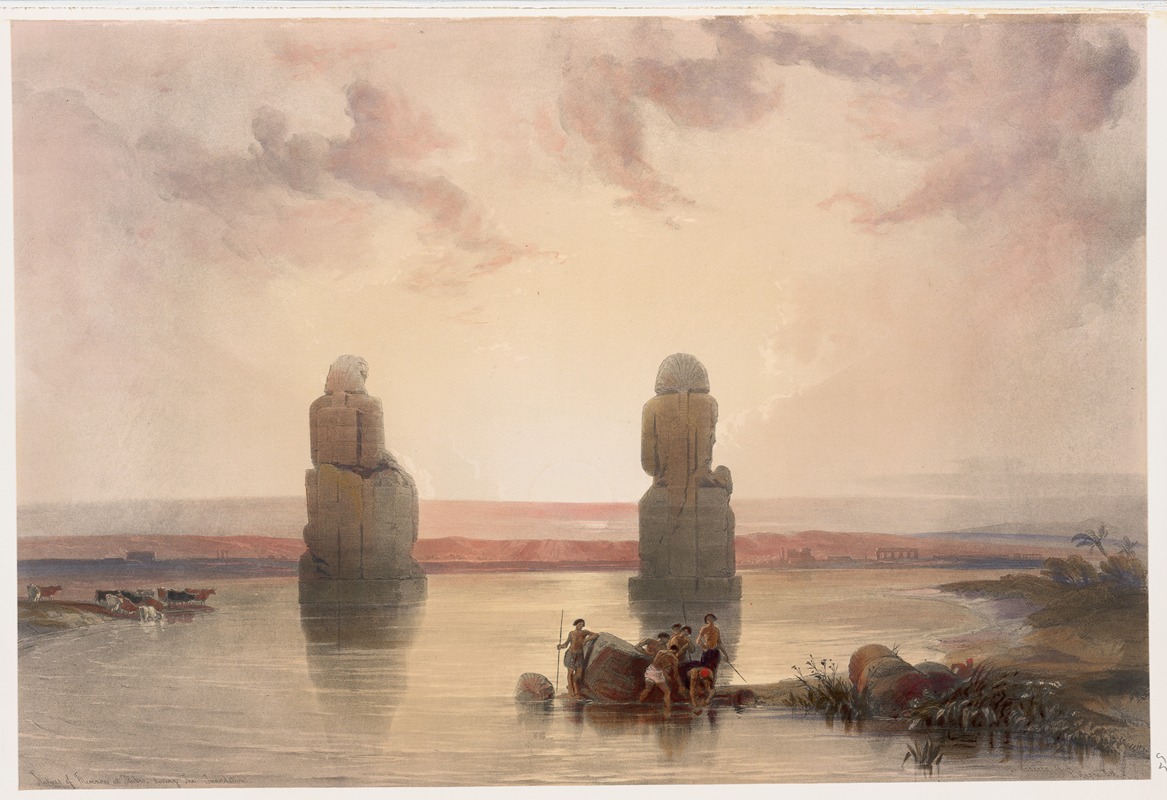
Statues of Memnon at Thebes, during the inundation.
A hand-painted replica of David Roberts’s masterpiece Statues of Memnon at Thebes, during the inundation., meticulously crafted by professional artists to capture the true essence of the original. Each piece is created with museum-quality canvas and rare mineral pigments, carefully painted by experienced artists with delicate brushstrokes and rich, layered colors to perfectly recreate the texture of the original artwork. Unlike machine-printed reproductions, this hand-painted version brings the painting to life, infused with the artist’s emotions and skill in every stroke. Whether for personal collection or home decoration, it instantly elevates the artistic atmosphere of any space.
"Statues of Memnon at Thebes, during the inundation" is a painting by the Scottish artist David Roberts, created in 1846. David Roberts (1796-1864) was a renowned painter known for his detailed and accurate depictions of architectural and historical sites, particularly in the Middle East and North Africa. His works are celebrated for their meticulous attention to detail and historical accuracy, often based on his extensive travels and firsthand observations.
The painting depicts the Colossi of Memnon, two massive stone statues located on the west bank of the Nile River near the modern city of Luxor, which was ancient Thebes. These statues represent Pharaoh Amenhotep III, who reigned during the 18th Dynasty of ancient Egypt, around 1350 BCE. Each statue stands approximately 18 meters (59 feet) tall and originally guarded the entrance to Amenhotep III's mortuary temple, which was one of the largest and most opulent temples of its time.
The scene captured by Roberts shows the statues during the annual inundation of the Nile River, a natural event that occurred every year and was crucial for the agricultural fertility of the region. The inundation would flood the surrounding lands, depositing nutrient-rich silt that rejuvenated the soil. In the painting, the statues appear partially submerged in water, emphasizing the cyclical nature of the Nile's flooding and its impact on the landscape and monuments of ancient Egypt.
Roberts' painting is part of his larger body of work that documents his travels in Egypt and the Near East, which he undertook between 1838 and 1839. His journey was part of a larger trend of European interest in the ancient cultures of the region, often referred to as "Orientalism." Roberts' works were later published as lithographs in a series titled "The Holy Land, Syria, Idumea, Arabia, Egypt, and Nubia," which gained widespread acclaim and contributed significantly to Western knowledge and appreciation of Middle Eastern and North African antiquities.
The Colossi of Memnon have fascinated travelers and historians for centuries, partly due to their impressive size and the mysterious "singing" phenomenon reported by ancient Greek and Roman visitors. According to historical accounts, one of the statues would emit a musical sound at dawn, which was believed to be the voice of Memnon, a hero of the Trojan War, greeting his mother, Eos, the goddess of dawn. Modern scholars suggest that the sound was likely caused by the temperature changes and the resulting expansion and contraction of the stone.
David Roberts' painting not only captures the grandeur and historical significance of the Colossi of Memnon but also serves as a valuable visual record of the site during the 19th century. His work continues to be appreciated for its artistic merit and its contribution to the documentation and understanding of ancient Egyptian monuments.
In summary, "Statues of Memnon at Thebes, during the inundation" by David Roberts is a historically significant painting that provides a glimpse into the ancient world and the enduring legacy of Egypt's monumental architecture. Through his detailed and accurate portrayal, Roberts has preserved a moment in time that continues to captivate and educate audiences about the rich history of Thebes and its iconic statues.





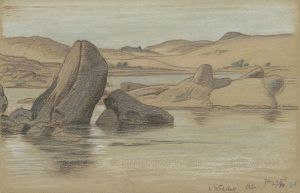
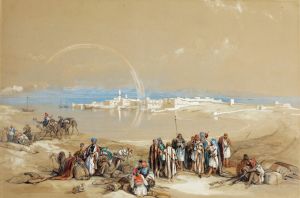
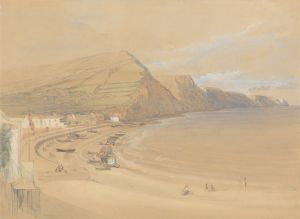
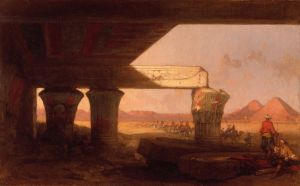
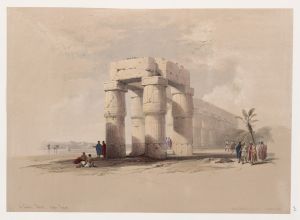
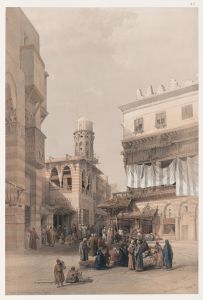
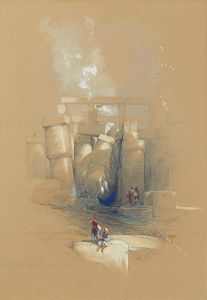
![Portico of the Temple of Kalabshi [Kalâbishah].](/imgs/217528/s/david-roberts-portico-of-the-temple-of-kalabshi-kalabishah-3a295995.jpg)
![Tombs of the Khalifs [Caliphs], Cairo.](/imgs/217567/s/david-roberts-tombs-of-the-khalifs-caliphs-cairo-375b2402.jpg)
![View on the Nile looking towards the pyramids of Dashour [Dahshûr]and Saccara [Saqqârah].](/imgs/217572/s/david-roberts-view-on-the-nile-looking-towards-the-pyramids-of-dashour-dahshurand-saccara-saqqarah-6cb692fe.jpg)
